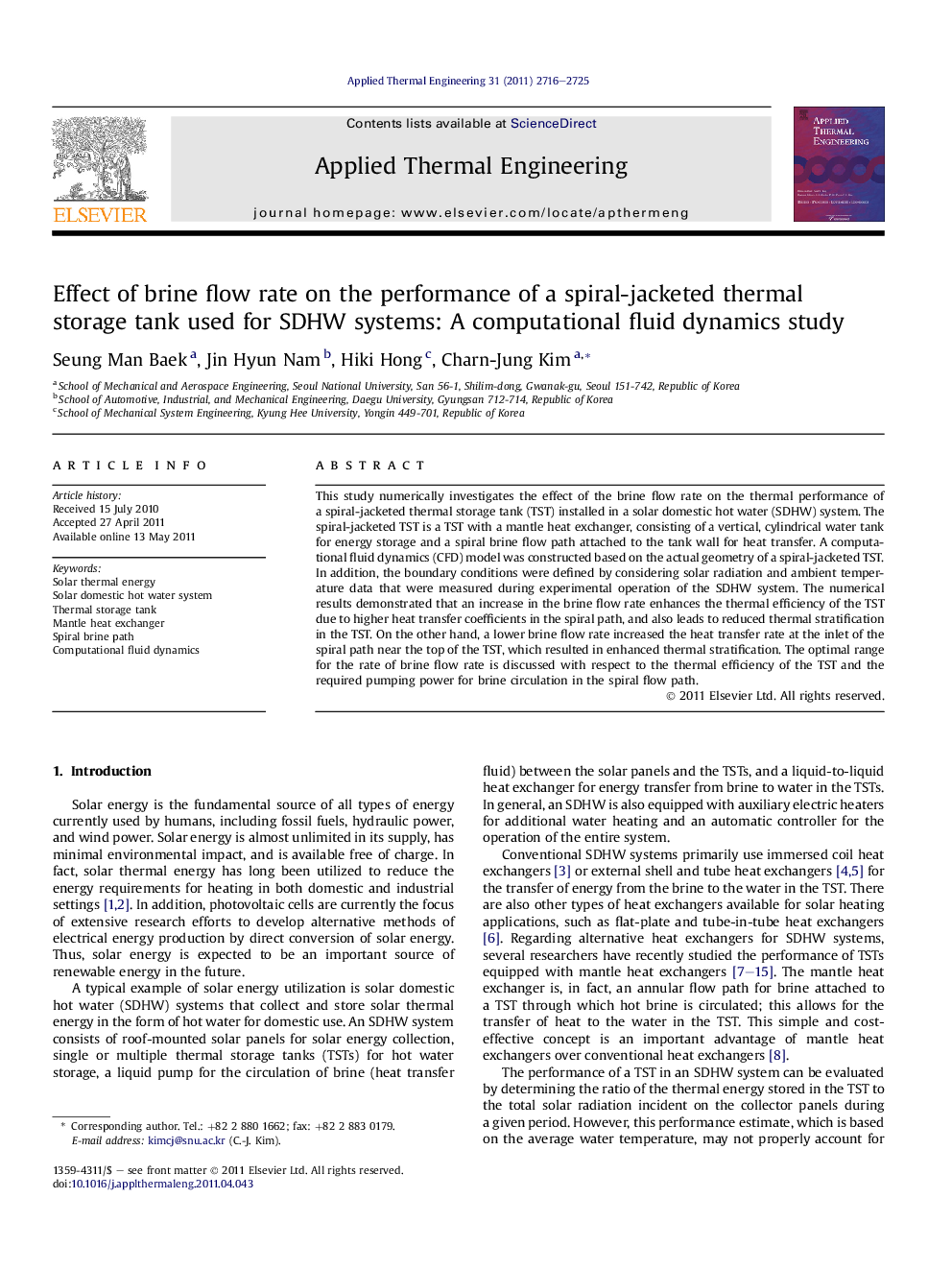| کد مقاله | کد نشریه | سال انتشار | مقاله انگلیسی | نسخه تمام متن |
|---|---|---|---|---|
| 647764 | 1457187 | 2011 | 10 صفحه PDF | دانلود رایگان |

This study numerically investigates the effect of the brine flow rate on the thermal performance of a spiral-jacketed thermal storage tank (TST) installed in a solar domestic hot water (SDHW) system. The spiral-jacketed TST is a TST with a mantle heat exchanger, consisting of a vertical, cylindrical water tank for energy storage and a spiral brine flow path attached to the tank wall for heat transfer. A computational fluid dynamics (CFD) model was constructed based on the actual geometry of a spiral-jacketed TST. In addition, the boundary conditions were defined by considering solar radiation and ambient temperature data that were measured during experimental operation of the SDHW system. The numerical results demonstrated that an increase in the brine flow rate enhances the thermal efficiency of the TST due to higher heat transfer coefficients in the spiral path, and also leads to reduced thermal stratification in the TST. On the other hand, a lower brine flow rate increased the heat transfer rate at the inlet of the spiral path near the top of the TST, which resulted in enhanced thermal stratification. The optimal range for the rate of brine flow rate is discussed with respect to the thermal efficiency of the TST and the required pumping power for brine circulation in the spiral flow path.
► A CFD model was developed for a spiral-jacketed thermal storage tank (TST) installed in a solar domestic hot water (SDHW) system.
► Effects of brine flow rate on the overall performance of the spiral-jacketed TST were numerically investigated.
► Higher brine flow rates slightly increased the solar energy acquired by the TST, but it also increased the pump power required to circulate the brine.
► Lower brine flow rates were found to be a better option for the spiral-jacketed TST, by maximizing the exergy of the SDHW system.
Journal: Applied Thermal Engineering - Volume 31, Issues 14–15, October 2011, Pages 2716–2725